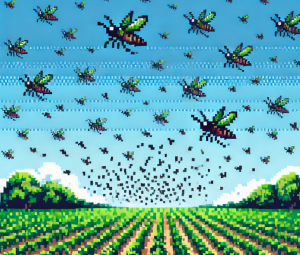
We Finally Read the Ape Genome Cover to Cover—Here’s What Blew Our Minds
Google Books offers a wealth of content, but significant portions of pages are often removed. While you can get some information, you will miss important material.
That’s basically what scientists have been doing for decades with the ape genome. Sure, we had drafts—partial sequences cobbled together with guesswork, missing whole chapters of the story. But now? We’ve got the deluxe, unabridged, director’s cut edition: the first complete, telomere-to-telomere (T2T) genomes of six ape species, including chimpanzees, gorillas, orangutans, and bonobos. And the story they tell? It’s not just about apes—it’s about us.
Strap in, because this is a tale of ancient rearrangements, missing genes, evolutionary fireworks, and a twist that might just explain how we developed the power of speech.
Meet the Genomic Avengers: Six Apes, Zero Gaps
Let’s talk scope. Researchers didn’t just fill in a few missing letters—they stitched together 215 gapless ape chromosomes, sequenced every twist and loop of DNA, and cracked the most stubborn regions: immune system genes, centromeres (think: the anchoring knot in each chromosome), and other repeat-heavy zones that once shrugged off science like Teflon.
It’s like they finally figured out how to read the footnotes in the margins of our species’ history—the parts with all the juicy details.
Plot Twist #1: The Genome Was Way More Messy Than We Thought
You know those family tree diagrams in biology books? Nice, clean lines from ancestor to descendant?
Yeah, toss those out.
With the full genomes, scientists found 12.5% to 27% of each ape genome just doesn’t line up neatly with ours. Entire segments are inverted, relocated, or duplicated. It’s like someone edited evolution with a cut-and-paste tool.
And those changes matter. Many of them affect regions packed with genes linked to brain development, immunity, and reproduction. Translation: this is where the magic (and the mystery) happens.
Plot Twist #2: Bonobos Have Mini Centromeres (And That’s a Big Deal)
Bonobos, our charming, peace-loving cousins, have a weird twist in their DNA: minicentromeres—teeny-tiny centromeres that are hundreds of times smaller than usual. They still get the job done, but their existence raises a wild question: Do we really need giant centromeres, or can evolution slim them down without consequences?
Biotech nerds, pay attention: this could be the blueprint for building smaller, more efficient artificial chromosomes in the lab.
Plot Twist #3: Our Immune Systems Are a Hot Mess of Evolution
Ever wonder how our immune system knows what’s “you” and what’s a threat? It’s written in a hyper-variable section of your genome called the MHC (Major Histocompatibility Complex). This new ape-genome super-set reveals the MHC is like the Wild West of evolution: chaotic, full of duplications, and structurally different in nearly every ape species.
Why does it matter? Because those differences shape how each species fights disease—and they could hold secrets to treating autoimmune disorders or developing better vaccines.
Speech, Songs, and One Juicy Human-Specific Gene
Here’s where things get freaky. One of the regions that stands out in the new genomes affects ADCYAP1, a gene active in the brain’s motor cortex. In humans, it’s dialed down in a way that matches—get this—the patterns found in songbirds that learn to sing.
It’s not a smoking gun, but it’s a tantalizing clue. It hints that some of the genetic rewiring that helped us talk might come from regulatory tweaks, not just gene changes.
Basically, evolution didn’t install new hardware—it updated the software.
What’s the Big Picture?
These complete ape genomes do more than fill in the blanks—they rewrite chapters of human evolution. Some highlights:
- We’ve got a shared ancestral population size with chimpanzees and bonobos that’s bigger than we thought. That changes how we understand our evolutionary branching.
- Orangutans are the masters of genetic duplication, carrying more fresh copies of genes (especially ones tied to brain function) than any other ape.
- Previously unseen genes are hiding in the now-sequenced regions—some of which may only exist in humans, or only in gorillas. Think: hidden traits waiting to be understood.
And it’s not just academic. Understanding where our DNA differs can lead to new insights in medicine, brain development, and even gene therapy.
What’s Next for Ape Genomes?
This is only the beginning. Scientists now want to complete genomes for every subspecies and many more individuals. That means we’ll soon be able to see how genes evolve within species, not just between them. It’s like zooming in from a world map to a city street view.
They also hope to dig into more functional studies—what do these new genes do? How do changes in methylation or chromosomal structure affect traits, behaviors, or diseases?
The T2T ape genome isn’t just a milestone—it’s a launchpad.
Let’s Explore Together
The best science stories are the ones that make you go, “Wait—what else don’t we know yet?” So let’s keep asking questions:
- What would you do if you could edit your genome as easily as updating your phone?
- How do you see this research affecting your view of evolution—or yourself?
- What’s the coolest weird animal fact you’ve learned recently?
💬 Drop your thoughts in the comments, share this with a fellow science lover, or tag us on social media with your favorite WTF evolution moment. Let’s decode the past—and shape the future—together.



